
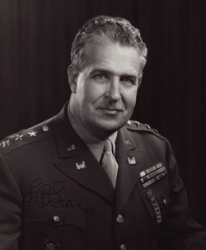 |
|
|
||
|
Leslie Richard Groves |
||||
|
Graduate, U.S. Military Academy, Class of 1918 Engagements: • World War II (1941 - 1945) |
||||
| Biography: | ||||
|
Leslie Richard Groves Leslie Richard Groves was born on 17 August 1896 in Albany, NY, the third son of four children born to Leslie Richard Groves, Sr., and his wife Gwen Griffith Groves. As the son of a U.S. Army Chaplain, Groves lived at a number of Army posts during his childhood. Groves graduated fourth in his class at the U.S. Military Academy in 1918 and was commissioned as a Second Lieutenant in the U.S. Army Corps of Engineers. In 1929, he went to Nicaragua as part of an expedition whose purpose was to conduct a survey for the Inter-Oceanic Nicaragua Canal. Following the 1931 Nicaragua earthquake, Groves took over responsibility for Managua's water supply system, for which he was awarded the Nicaraguan Presidential Medal of Merit. He attended the Command and General Staff School at Fort Leavenworth, KS, in 1935-36, and the Army War College in 1938-39, after which he was posted to the War Department General Staff. In 1940 Groves, who "had a reputation as a doer, a driver, and a stickler for duty," became Special Assistant for Construction to the Quartermaster General, tasked with inspecting construction sites and checking on their progress. In August 1941, he was given responsibility for the gigantic office complex to house the War Department's 40,000 staff which would ultimately become the Pentagon. In September 1942, Groves took charge of the Manhattan Project. He was involved in most aspects of the atomic bomb's development. He participated in the selection of sites for research and production at Oak Ridge, TN, Los Alamos, NM and Hanford, WA. He directed the enormous construction effort, made critical decisions on the various methods of isotope separation, acquired raw materials, directed the collection of military intelligence on the German nuclear energy project and helped select the cities in Japan that were chosen as targets. Groves wrapped the Manhattan Project in security but failed to prevent the Union of Soviet Socialist Republics from conducting a successful espionage program that stole some of its most important secrets. After the war, Groves remained in charge of the Manhattan Project until responsibility for nuclear weapons production was handed over to the U.S. Atomic Energy Commission in 1947. He then headed the Armed Forces Special Weapons Project, which had been created to control the military aspects of nuclear weapons. Groves realized that in the rapidly shrinking postwar military he would not be given any assignment approaching in importance the one he had held in the Manhattan Project, and he decided to leave the Army in 1948. He was promoted to Lieutenant General just before his retirement on 29 February 1948 in recognition of his leadership of the bomb program. By a special Act of Congress, his date of rank was backdated to 16 July 1945, the date of the Trinity nuclear test. Medals and Awards Distinguished Service Medal Honors Groves is memorialized as the namesake of Leslie Groves Park along the Columbia River, not far from the Hanford Site in Richland, WA. In Retirement After retiring from the Army, Groves became a Vice-President at Sperry Rand and retired from that company in 1961. He served as President of the West Point alumni organization, the Association of Graduates. He presented General of the Army Douglas MacArthur the Sylvanus Thayer Award in 1962, which was the occasion of MacArthur's famous Duty, Honor, Country speech to the U.S. Military Academy Corps of Cadets in 1962. Groves wrote an account of the Manhattan Project entitled Now It Can Be Told, originally published in 1962. In 1964, he moved from Darien, CT, back to Washington, DC. Death and Burial Lieutenant General Leslie Richard Groves suffered a heart attack on 13 July 1970 caused by chronic calcification of the aortic valve. He was rushed to Walter Reed Army Medical Center, where he died that night. He is buried at Arlington National Cemetery in Arlington, VA, next to his brother Allen, who died of pneumonia in 1916. |
||||
| Honoree ID: 2578 | Created by: MHOH | |||
Ribbons
Medals
Badges
Honoree Photos
 | 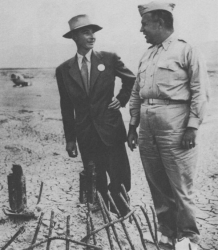 | 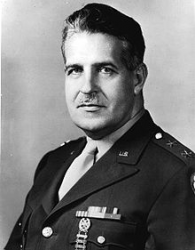 |
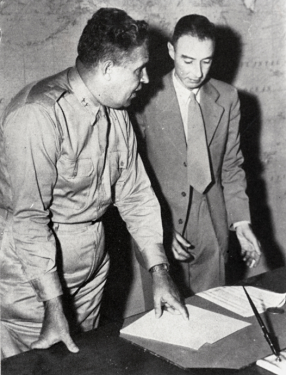 | 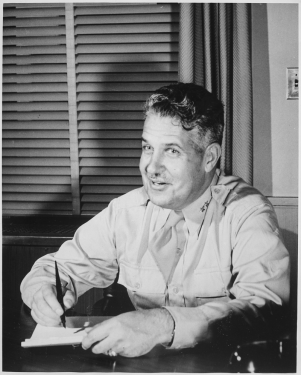 |
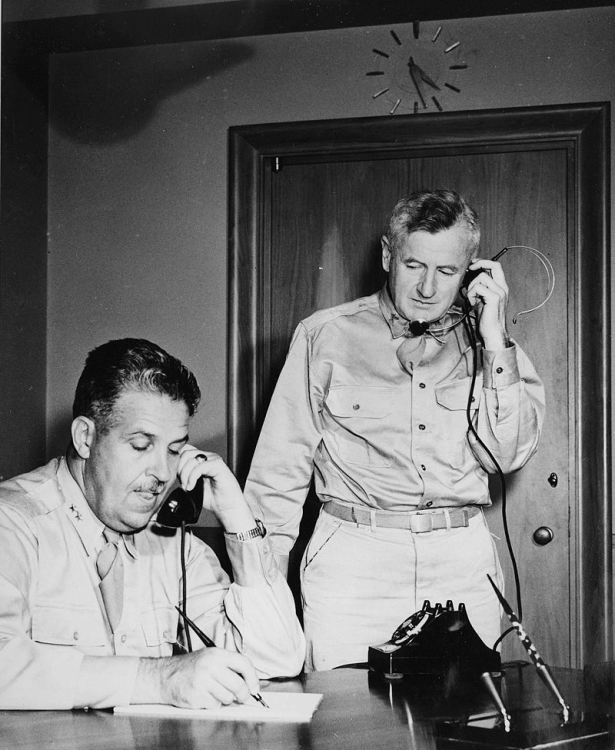 |


